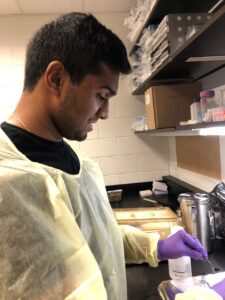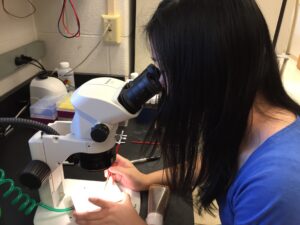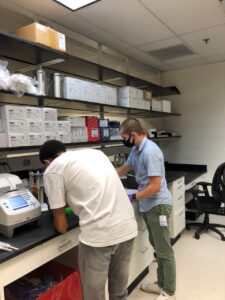Research Facilities
Liquid Chromatography/Mass Spectrometry (LC/MS)
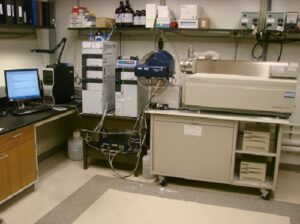
Liquid Chromatography Mass Spectrometry System
The Department maintains an Analytical Chemistry facility consisting of a Triple Quadrupole Mass Spectrometer (MS) as well as analytical and preparative liquid chromatography (LC) systems. Under the direction of Dr. Jose Tomsig, this facility provides to Department researchers a wide range of capabilities including quantification of small molecules from biological samples, metabolomics, assay development, metabolite identification and peptide analysis. Details of the capabilities of this shared resource are provided below.
Seahorse XF24 Extracellular Flux Analyzer
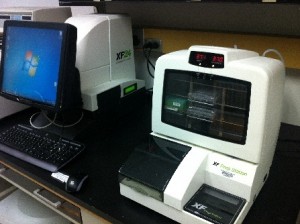
Seahorse XF24 Extracellular Flux Analyzer
The Seahorse XF24 is a revolutionary instrument for studies of cellular energy metabolism. This instrument measures oxygen consumption rate (OCR) and extracellular acidification rate (ECAR) of living cells simultaneously in a 24 well format. The XF24 can also measure respiration of isolated mitochondria. Kinetic measurements are made in real-time and the entire assay is completely non-invasive and requires no addition of dyes, labels or reporters. The XF24 has four injection ports per well to allow up to four test compounds (drugs or substrates) to be added automatically to each well at pre-designated times. The data collected from this instrument has been used in a variety of contexts including; glycolytic vs oxidative cancer cell metabolism, insulin resistance and obesity studies, measurement of mitochondrial quality and function, neurodegeneration, immune cell function, cardiovascular bioenergetics, aging, zebrafish respiration, pancreatic islet metabolism, and more.
Office of Research Cores
UVA Office of Research Cores
Learn MoreThe UVA School of Medicine supports more than fifteen research cores. Each core has a director, a faculty advisor, and oversight committee. The goal of the Office of Research Core Administration (ORCA) is to provide UVA researchers with access to state-of-the-art instrumentation, technology and scientific expertise for the communal advantage of our institution’s investigators so that they can effectively carry out the research mission of the university.

